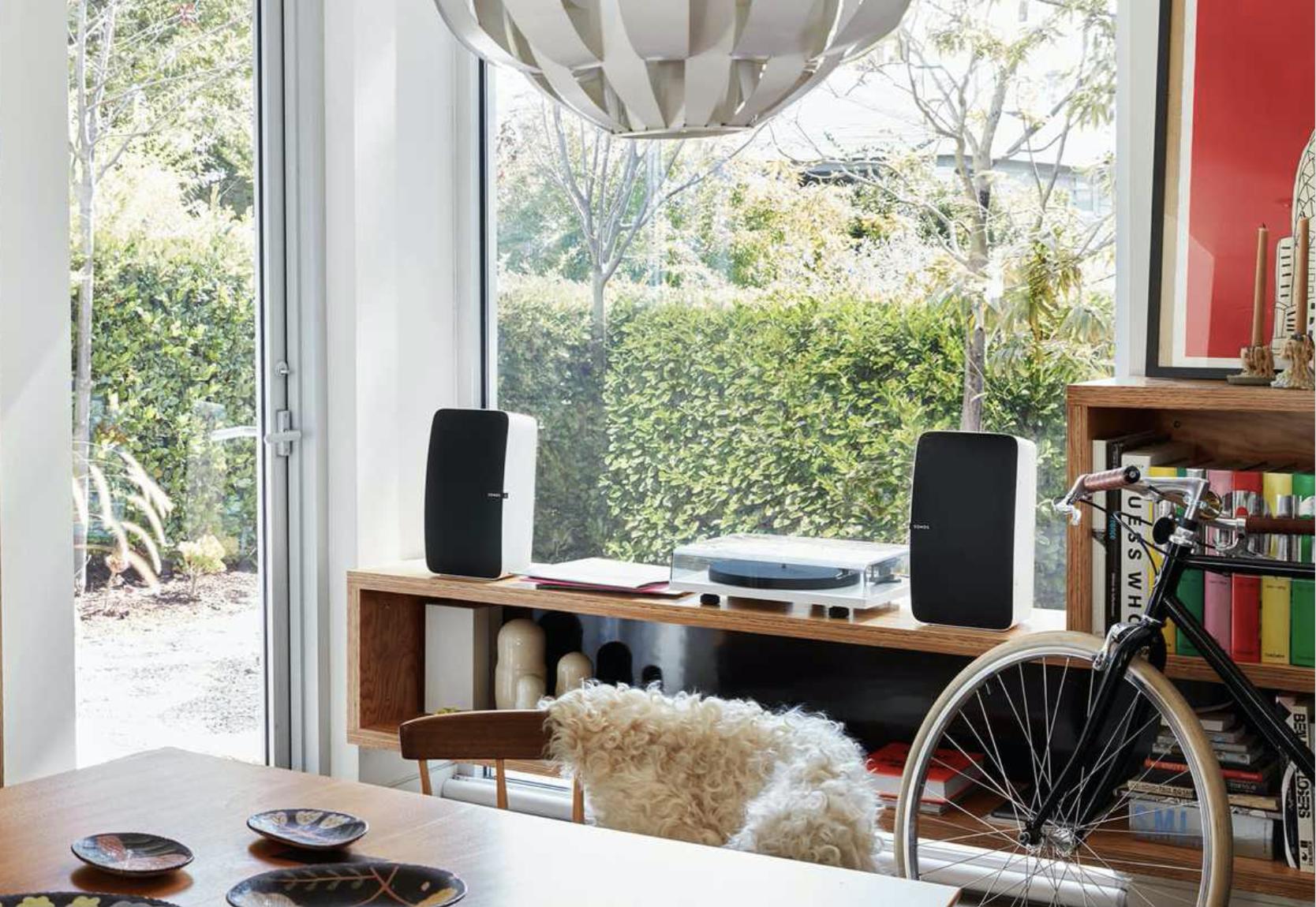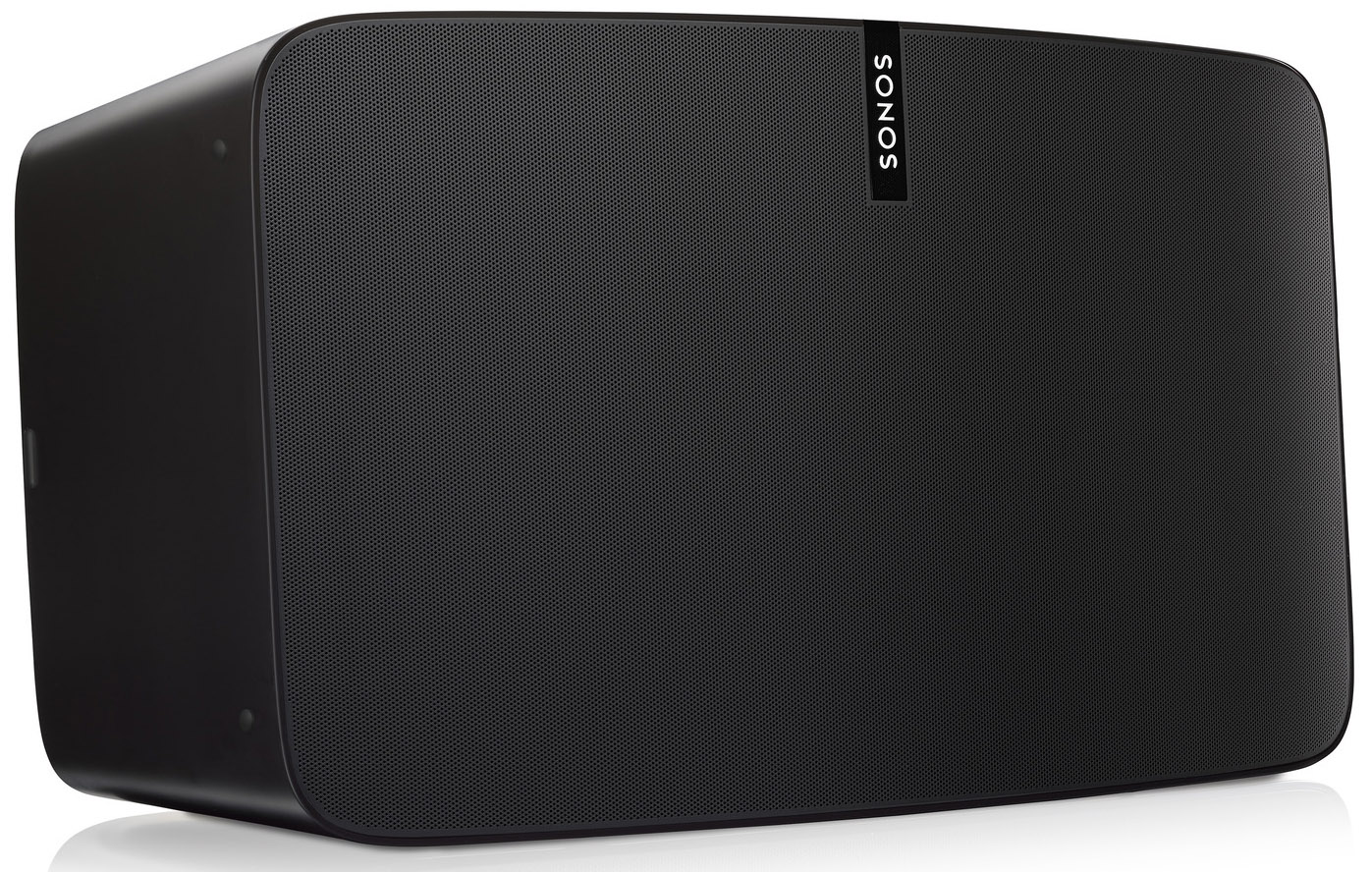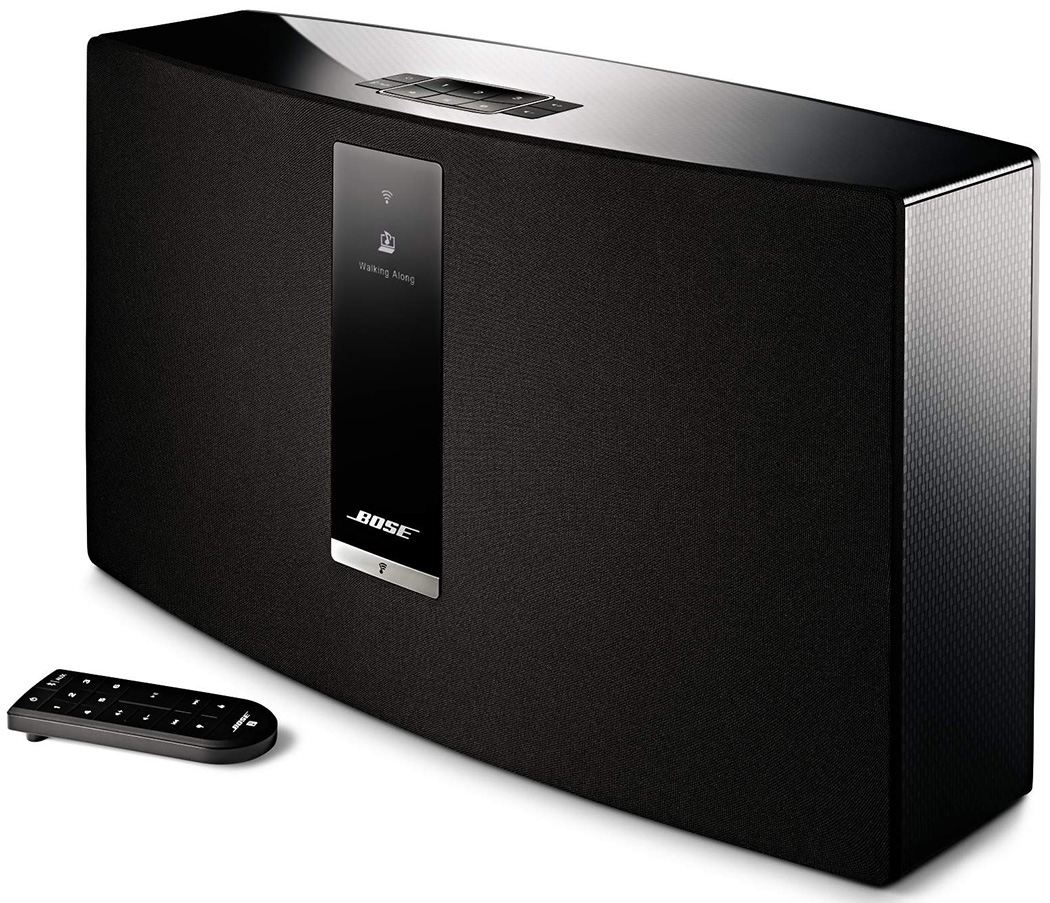Sonos Play:5 vs. Bose SoundTouch 30: Which should you get?


Build out your system
The Play:5 is the perfect speaker for fans that are ready for more. It's more expensive but is designed to be your musical hub if you have more than one Sonos speaker in the house. You can even place the Play:5 vertically without changing the sound.
For
- Can be used as part of a Sonos system
- Lots of compatible streaming services
- 3.5mm headphone jack
- Vertical or horizontal orientation
Against
- More expensive

Better on its own
Bose has long been one of the top names in audio — and for very good reason. The SoundTouch 30 delivers powerful, warm bass and has wonderful connectivity features. Go with the SoundTouch 30 if you prefer listening to your own tunes, or only plan on buying a speaker or two.
For
- Cheaper than Sonos Play:5
- Fantastic bass
- Wi-Fi and Bluetooth
- Comes with remote control
Against
- Limited compatible streaming services
- App is less intuitive
As tech nerds and audio enthusiasts, there's nothing we love more than a fantastic speaker. Whether you're building a sound system for your entire house, or just want to listen to tunes from your phone, we've tried it all.
When it comes to amazing sounding speakers, both the Sonos Play:5 and Bose SoundTouch 30 won't disappoint you. While they do have slightly different sound profiles — Bose is a little heavier on bass — both speakers clear and consistent at all volume levels.
The Sonos Play: 5 (and all Sonos speakers) excel at being used together with as many different Sonos speakers to make a home audio system. The Play:5 is resistance to humidity so you should have problems placing them around your house, and they can even be part of a 5.1 or 7.1 surround system for your TV if you pick up enough of them.
The Bose SoundTouch 30 is better for people who are looking for one or two speakers to listen to music in their home. While it may not have as many compatible streaming services and the app experience is slightly less ideal than Sonos the Sound Touch 30 does have Bluetooth. This makes the SoundTouch 30 one amazing home speaker to listen to your tunes from any device!
Important specs
The differences on the spec sheet between these two speakers don't look like much, but there are a few things worth mentioning. The Bose SoundTouch 30 is slightly larger and slightly heavier, so if you're considering placing the speakers on shelves, you'll need to have a sturdier one for the Bose. Both speakers can use Alexa, meaning if you are an Alexa household, either speaker should nicely, but only the Bose SoundTouch 30 comes with a physical remote and Bluetooth compatibility.
| Header Cell - Column 0 | Sonos Play:5 | Bose SoundTouch 30 |
|---|---|---|
| Dimensions | 8.03 x 14.33 x 6.06 inches | 9.69 x 17.13 x 7.09 inches |
| Weight | 14 lbs | 18.51 lbs |
| Bluetooth | No | Yes |
| Alexa | Yes | Yes |
| Streaming Services | Over 30 | Only 8 |
| AirPlay 2 | Yes | Yes |
| Controls | App only | App and physical remote |
| Headphone jack | Yes | Yes |
There's a couple of soft differences you won't notice in the spec sheet. For example, the Sonos app is better designed than the Bose app, making it slightly easier to navigate and bit simpler to use; however, the Bose SoundTouch 30 comes with a physical remote, meaning you don't always have to have your phone or tablet next to you if you want to skip tracks or change the volume.
A big difference between the two speakers is the number of streaming services you can use. Sonos is compatible with almost every music streaming service you can name, including ones that are only available in certain countries. If you stream a lot of your music, the Sonos Play:5 is likely a better pick for you, especially if you live in a place that doesn't have access to popular streaming services. Don't get me wrong; the Bose SoundTouch 30 is compatible with Spotify, Pandora, Deezer, iHeartRadio, Tunein, SiriusXM, Apple Music, and Amazon Music which for a lot of people, would probably be just fine.
Master your iPhone in minutes
iMore offers spot-on advice and guidance from our team of experts, with decades of Apple device experience to lean on. Learn more with iMore!
Both speakers have their merits, and depending on what you're looking for; either speaker could be the right fit for you.
The Sonos Play:5 really excels at being a multi-speaker system with other Sonos speakers. Its app is super intuitive, and setting up multiple rooms and zones is fairly straight forward. If you're looking to build out a home theater system or a big multi-room household-wide sound system, the Sonos Play:5 (and other Sonos speakers) is going to fit your needs better and be able to seamlessly grow with your sound system as you add to it.
If you're looking for an excellent sounding speaker for your house to play your music when you want, and maybe one more speaker to put in a different room that's connected, the Bose SoundTouch 30 has a great fit. It's probably one of the best sounding and most versatile Bluetooth speakers you can have in your home, and although the app is a little less great than what Sonos offers, it has a physical remote that can control playback perfectly.

A full multi-room sound system
Its intuitive app, easy setup, a plethora of compatible streaming services, and ability to be mix and matched with many Sonos speakers, makes the Play:5 a fantastic buy for anyone looking to build out their audio system.

A fantastic and powerful home speaker
Bose has made a name for itself in audio, and the SoundTouch 30 is probably its most versatile and best-sounding speaker in its line up. If you're looking for one or two speakers that let you listen to your music from your devices and will pump out the volume, the Bose SoundTouch 30 is a great candidate.

Luke Filipowicz has been a writer at iMore, covering Apple for nearly a decade now. He writes a lot about Apple Watch and iPad but covers the iPhone and Mac as well. He often describes himself as an "Apple user on a budget" and firmly believes that great technology can be affordable if you know where to look. Luke also heads up the iMore Show — a weekly podcast focusing on Apple news, rumors, and products but likes to have some fun along the way.
Luke knows he spends more time on Twitter than he probably should, so feel free to follow him or give him a shout on social media @LukeFilipowicz.
